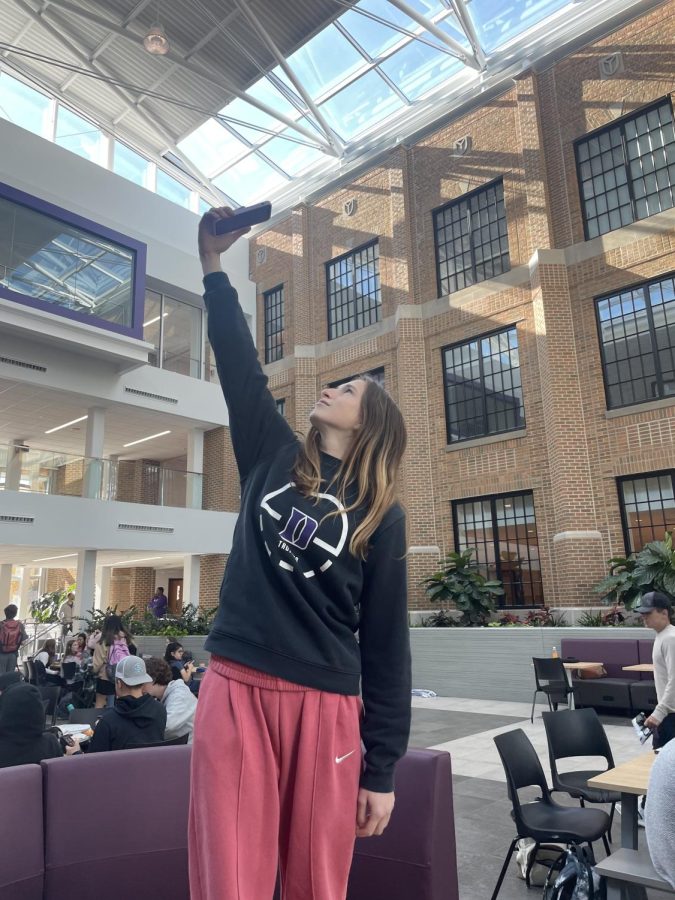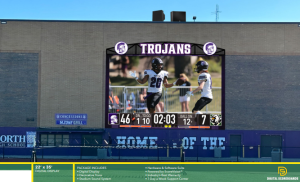WACKY WIFI: Poor connectivity causes chaos
CONNECTION CHAOS: Senior Violet Mitchell grows restless as Wi-Fi connections drop in and out on her devices.
November 9, 2022
In Access periods, Sept 29, every student attempted to log onto the same resource concurrently for the first time, ultimately testing the bandwidth of the Wi-Fi network. According to Director of Technology & Information Services for District 99, Rod Russeau, a minimal amount of students found success in connecting to the online resource. After this event, the district has eliminated access to BYOD Wi-Fi, prioritizing Chromebook connection before personal devices.
“The recent Access period activities may have been one of the first times that virtually all students were on their Chromebooks attempting to access the same external resources simultaneously. This dramatic, concurrent network utilization appears to have overloaded our wireless access points,” Russeau said.
In an attempt to solve this issue, the D99 BYOD Wi-Fi was disabled with the goal of conducting essential scheduled activities Oct. 12 and Oct. 13. The shutdown of the BYOD network proved successful, however, students still found ways to connect to the district Wi-Fi.
“It was evident that the number of connections to the guest network was significantly greater than usual and snowballing,” Russeau said. “Our Wi-Fi network and backbone infrastructure are designed to support the 10,000 – 12,000 devices attempting daily to connect to and utilize our network.”
The D99 GUEST Wi-Fi network is protected by a complex series of numbers and letters, but students connected quickly after the password was leaked. Senior Shea Weltler was unsuccessful in gaining access to the guest network.
“When the Wi-Fi went out everyone was searching for the password, they were so eager to get it. Everyone cares so much about going on their phone; nobody can just not go on their phone for one day,” Weltler said.
When students were participating in classes online during the pandemic, it was easier to utilize phones during class. Since then, the need students feel to have a connection to Wi-Fi on their personal devices is apparent.
“I think COVID-19 had an impact because people were so used to just going on their phones during class online because the teachers couldn’t tell,” Weltler said.
Additionally, the pandemic decreased the amount of paper materials given to students. With more digital lessons brings greater chances for Wi-Fi issues, disrupting entire classes, not just individual students.
A Wi-Fi network for personal devices was not available until 2020, so when the class of 2023 were freshman, students relied on limited internet service for device usage. Senior Matthew Rucolas thinks that a lot has changed since his freshman year, when Wi-Fi connection to personal devices was not permitted.
“It’s definitely different now than it was freshman year just from being accustomed to having Wi-Fi for the past year and a half,” Rucolas said. “Most people, including myself, have been instantly taking their phones whenever we have independent work time because we can access apps like Snapchat and TikTok.”
The district sent out a message via Student Square, Oct. 25 explaining that due to an increase in technical issues, D99 BYOD Wi-Fi network will be temporarily unavailable. The goal is to prioritize connectivity of school-issued devices to maximize learning time.
“The unexpected high level of usage has created technical issues; as a result, the district cannot continue to offer Wi-Fi for personal devices at this time,” District 99 wrote in the Student Square update.
However, another message was sent out via Student Square, Oct. 26 giving students permission and the password to connect their personal devices to the D99 GUEST network. Junior Fiona Doyle connected her phone to the Guest Wi-Fi in hopes of finding a better solution.
“The D99 GUEST Wi-Fi has been working well for me. I know people it hasn’t been working for, though. I think it’s a good solution because a lot of classrooms don’t have cell service at all,” Doyle said. “As much as we would like to think we can go eight hours without social media, I feel disconnected from my peers without it.”
The district’s goal is to prioritize connections that benefit learning before student device connection.
“We are a learning institution, and instructional activities and the devices that support them are our highest priority. We continue to work diligently to find a way for all our BYOD personal device Wi-Fi usage to coexist with our essential instructional activities within the extreme network demands during these school-wide Access activities,” Russeau said.
As of right now, student access to the guest network is a temporary solution, as the district continues to resolve the issues within the BYOD Wi-Fi network.


























